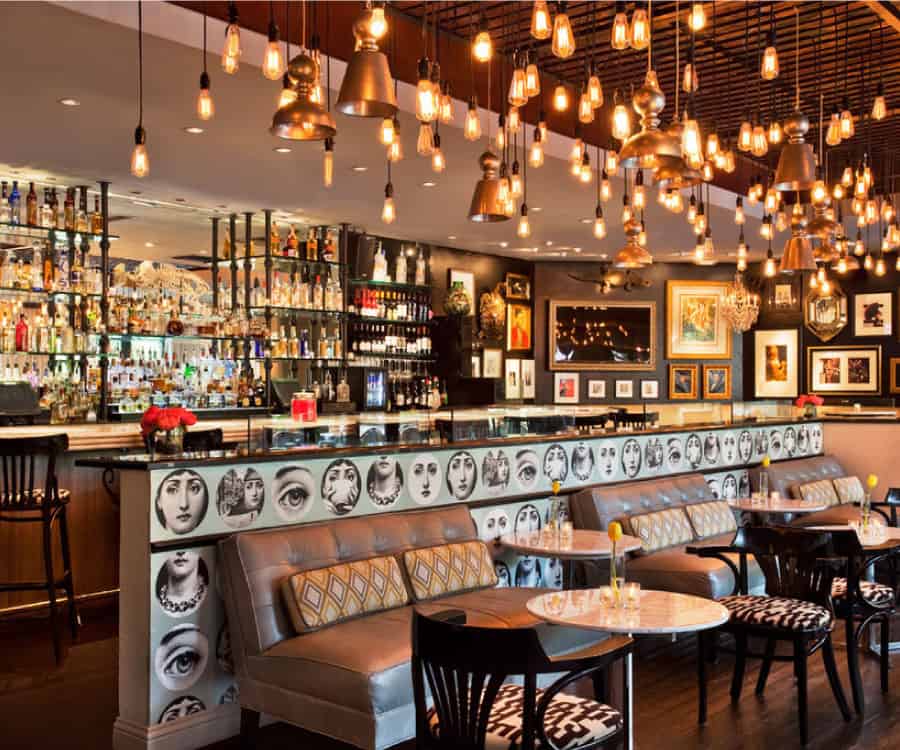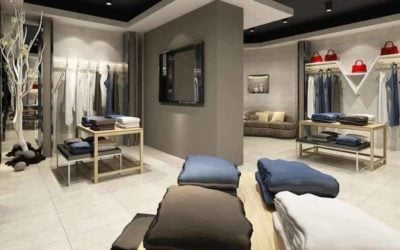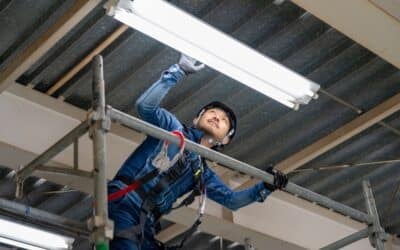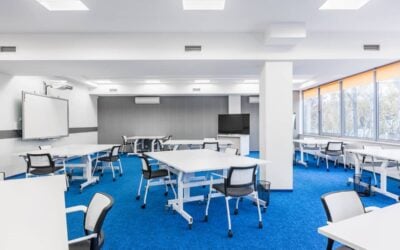How Light Impacts Psychology & Mood in Restaurants
Lighting is one of the most important aspects to consider when planning a restaurant’s interior design. It’s an essential element with a vital role that can either make or break your dining clientele’s satisfaction and experience.
Your newly designed restaurant space may have a beautiful interior that includes high-end finishes and trendsetting architectural details. However, if lighting is overlooked, and leaves the space too bright, or too dim, all that design work unfortunately loses its appeal.
This is why it’s helpful to understand lighting’s influence within a restaurant setting. Of course, not all restaurants are alike, and the best restaurant lighting design will vary from a large, fast-casual diner to an intimate, upscale establishment. But if you have background knowledge on lighting basics, that’s a great start, no matter what type of restaurant you’re tasked with designing.
Types of Lighting for Restaurants
The lighting you choose for your restaurant will help set the mood and tone of the entire space. There are three primary types of commercial lighting that are used in restaurants, regardless of the space’s size, clientele and demographics.
These types of illumination are ambient, task, and accent lighting. Each kind has a specific purpose which is achieved through fixture choice and general placement within the space.
Ambient Lighting
This is the main source of light for the entire restaurant. In most environments, ambient lighting is a combination of natural light provided by windows or skylights, and installed overhead light fixtures.
Ambient light creates the overall mood of the establishment, while allowing customers and employees to move easily and comfortably around the space. A dimly lit environment provides an intimate ambiance which is ideal for upscale restaurants, special occasion dining, and lounge or bar areas. Brighter lighting is generally used in busy, lunchtime eateries, such as delis or fast-casual restaurants.
Dim ambient light promotes diners to relax and stay longer, while brighter light is better for quick customer turnaround in high-traffic spaces.
Task Lighting
Task lighting’s main purpose in a restaurant is to enhance functionality. This type of light helps customers and staff see better while performing specific tasks, including reading a menu, or prepping food in the kitchen.
Restaurants that are generally low-lit require good task lighting. Hanging pendants above tables, bright LED track lights in the kitchen, and a small lamp at the hostess stand all serve very specific task functions. Illuminating hallways, walkways, and bathrooms with ample light sources also ensures everyone’s safety, especially when the restaurant is at full capacity.
Accent Lighting
Accent lighting adds visual appeal to a space, and is more decorative than functional in terms of usage. It can create a focal point around your front-of-house area, or highlight architectural and design elements such as archways, paintings, and sculptures.
Wall sconces, directional LED track lights, and recessed LEDs that can aim light at a particular object are great examples of accent lights for restaurant and bar spaces.
The Impact of Lighting on Restaurants
Interior restaurant lighting can significantly impact diners’ behavior, and ultimately influence their experience and opinion of a particular establishment. For example, many restaurants use different lighting levels throughout the day in order to set the proper mood and pace. This means that customers could either be drawn to your space, or put off by it because of certain lighting choices.
The psychology behind great restaurant design includes some need-to-know lighting tips and techniques. If you want your restaurant to have better lighting, simply follow these helpful guidelines.
When to use low-lighting
The technique of low-lighting a restaurant space creates a more intimate atmosphere. Low lights are considered relaxing, or romantic, and they encourage diners to linger a bit longer within the establishment. Regarding the actual lights, LEDs featuring warmer color temperatures and dimming capabilities are typically used for low-lighting purposes.
These settings usually have overhead LED fixtures with customizable dimmers and plenty of accent lighting. In upscale settings, low lights create a cozy feel by allowing guests to have a perceived level of privacy from other diners within the space.
Restaurant settings that utilize low lighting also need to incorporate plenty of task lighting within the design. This is so staff and clientele can see properly, and safely navigate around all the dimly lit areas.
When bright lights are better
Bright lighting tends to be more stimulating and energizing when used in restaurants. This type of lighting encourages customer turnover and facilitates traffic movement within the space. Naturally, brighter lights are best for high-energy settings such as fast-casual cafes, family-friendly diners, pizza parlors, ice cream shops, and similar establishments.
Any type of eatery that does more business during morning or midday hours benefits from brighter lighting. This type of lighting is best achieved with large windows that let in lots of natural sunlight, along with bright overhead fixtures that complement daylight’s crisp, invigorating color temperature.
The right lighting from day to evening
When deciding on the right types of restaurant lighting, you need to take into account the establishment’s main hours of operation, and the best atmosphere for that time period. If you run a high-traffic diner that generates most of its business during the morning rush, you won’t have the same lighting plan as a fine dining restaurant that’s only open in the evening.
And if you have a restaurant that’s open all day, from morning to evening, this means you may have to adjust the lighting several times throughout the day for maximum effect.
In the morning – Brighter lighting is better for meal services early in the day. In the morning, customers are waking up and preparing for their daily activities. Just as breakfast and coffee energizes people, bright lighting has the same effect. It awakens individuals and provides a certain amount of stimulus that gets people going.
At midday – During lunchtime rush, lights typically remain bright to moderate. This maintains a faster pace which encourages quick turnarounds. At lunch, most customers want to eat, then get back to work. They may want to sit and relax for a bit, but they don’t want to get too comfortable and risk feeling drowsy.
Evening hours – When dinner time approaches, it’s finally okay to dim the lights. Whether or not your restaurant is casual or formal, most dining establishments benefit from dimmer, warmer lighting in the evening. Customers can sit back and relax after a long day, so lighting that’s suitably relaxing is appropriate for this time. If diners feel calm and at ease, they’re more likely to stay longer, order another drink, have dessert, and spend more money.
TCP Commercial Lighting for Restaurants
One way to improve your restaurant’s profit potential is to invest in better types of restaurant lighting. Energy efficient LEDs not only allow you to customize color temperature and brightness throughout the day, they also help you save money in the long run with lower utility bills.
TCP specializes in high-quality LED lighting that provides the perfect atmosphere for any hospitality, restaurant, or bar setting. Customers will have a better dining experience in your establishment, while staff members will maintain safety and efficiency throughout every service.







